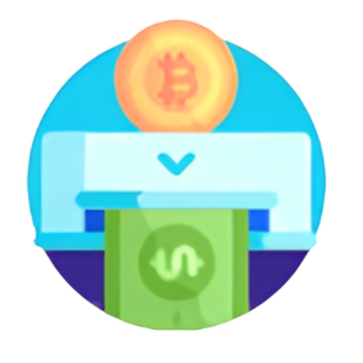
In today’s digital age, Android apps have transformed from mere entertainment solutions to robust revenue-generating platforms. With over three million apps on the Google Play Store, developers are increasingly seeking effective ways to monetize their creations. Whether you are an independent developer or part of a larger team, understanding the various monetization strategies is crucial for turning your app into a profitable venture. This article explores the primary methods through which Android apps make money, detailing the benefits and challenges associated with each approach.
Understanding App Monetization
What is App Monetization?
App monetization refers to the process of converting app usage into revenue. It’s a critical aspect of app development, particularly if the app is offered for free. Monetizing an app can involve various strategies ranging from displaying ads to offering premium features for a fee. The goal is to leverage the app’s audience to generate income without compromising the user experience.
Key Point: Monetization is essential for sustaining the app’s development and operation.
Primary Android App Monetization Methods
Advertisements
One of the most common methods to monetize an app is through advertisements. Ads can come in various forms:
- Banner Ads: These are small advertisements placed at the top or bottom of the app’s interface.
- Interstitial Ads: Full-screen ads that appear at natural transition points, such as between levels in a game.
- Video Ads: Often used as a part of reward strategies, where users watch a video to receive some form of in-app reward.
“Advertisements need to be integrated smartly to ensure they do not hinder the user experience,” notes a mobile app marketing expert. Here’s how ads can be effective:
They require no upfront payment from the user.
They can be highly profitable with a large user base.
In-App Purchases
In-app purchases provide users with the option to buy virtual goods or additional features within the app. This strategy is particularly popular in gaming apps, where users can purchase extra lives, special items, or cosmetic enhancements. For example, a gaming app might offer users the ability to skip a difficult level for a small fee.
Benefits of in-app purchases include:
- Increased user engagement and retention.
- Direct revenue from the app without the need to attract advertisers.
Subscriptions
Subscription models are becoming increasingly popular, especially for apps that offer content or services, such as streaming media, news, or fitness guidance. Users pay a recurring fee to access content or services on a regular basis. This model assures a steady revenue stream and helps build a loyal user base.
Example: A meditation app might offer daily guided sessions for a monthly subscription fee.
Innovative Monetization Strategies
Sponsorships and Partnerships
Strategic partnerships and sponsorships can be highly lucrative. An app could partner with brands that align with its content and audience. For instance, a fitness app might partner with a sports clothing brand to offer exclusive content or products.
Affiliate Marketing
This involves promoting other companies’ products within the app and earning a commission for each sale made through the app. It’s a win-win situation; users discover products relevant to them, and developers generate revenue from each sale.
Point to Note: The key to successful affiliate marketing is ensuring that the promoted products are relevant to the app’s audience.
Choosing the Right Monetization Strategy
Analyzing Your Audience
The foundation of any successful monetization strategy is a deep understanding of your app’s audience. Identifying who your users are, what they want, and how they interact with your app is crucial. This can guide U in choosing a monetization strategy that enhances user experience rather than detracts from it. For instance, if your app targets busy professionals, a subscription model offering premium, ad-free content might be more appealing than a freemium model with ads.
Key Insight: “Understanding user behavior through analytics tools can provide valuable insights into the most effective monetization strategy,” explains a digital marketing strategist.
Competitor Analysis
Looking at how similar apps monetize can provide critical insights and help you carve out a niche for your own app. Analyzing your competitors’ successes and failures allows you to learn from their experiences and avoid common pitfalls. Additionally, staying aware of industry trends can help you anticipate changes in user expectations and adjust your strategies accordingly.
Practical Example: Observing a competitor’s shift from a freemium to a subscription model might indicate a growing willingness among users to pay for uninterrupted services.
Challenges in Monetization
User Experience vs. Revenue
Finding the balance between monetization and user experience is one of the greatest challenges for app developers. Aggressive monetization strategies, such as frequent or intrusive ads, can alienate users and lead to app uninstalls. It’s vital to implement monetization in a way that keeps the app engaging and respects the user’s in-app experience.
Developer Tip: “Test different monetization strategies gradually. Monitor user feedback and adjust accordingly to find a balance that maximizes revenue without compromising on user satisfaction,” suggests an experienced app developer.
Navigating Legal Constraints
As U implement monetization strategies, it’s imperative to navigate the legal landscape carefully, particularly regarding user data and privacy. Laws such as the General Data Protection Regulation (GDPR) in the European Union and similar regulations worldwide have significant implications for how apps can generate revenue from user data.
Legal Advice: “Always ensure your app’s monetization strategies comply with local and international laws. Transparently communicate how user data is used, and provide users with control over their information,” advises a technology law expert.
Conclusion
In conclusion, while there are numerous ways to monetize Android apps, the key to success lies in selecting and tailoring strategies that align with both your business objectives and your users’ preferences. Whether through ads, in-app purchases, subscriptions, or a combination of methods, effective monetization requires a nuanced approach that balances profitability with user experience. As the app market continues to evolve, staying adaptable and informed will be crucial for developers aiming to profit from their innovations.
FAQs
How much money can an Android app make from ads?
It varies widely depending on the app’s reach and user engagement, but apps with high traffic can generate significant revenue through ads.
What are the advantages of the subscription model over in-app purchases?
Subscriptions provide a steady revenue stream and can enhance user engagement by offering continuously updated or premium content.
How do free apps make money if they’re not charging users?
Free apps typically make money through advertising, in-app purchases, or selling user data, always ensuring compliance with legal standards.
What is the most user-friendly monetization strategy?
Subscription models are often seen as user-friendly, especially if they replace ads, providing a cleaner, more engaging user experience.
Are there specific challenges in monetizing an app on Android compared to iOS?
Yes, the Android market is more fragmented, which can pose challenges in reaching a uniform user base and implementing consistent monetization strategies across different devices and regions.


